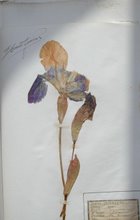Un misterioso corolario en el párrafo centésimo séptimo de El Origen de las Especies
 El autor encuentra semejanza entre los dientes del tigre y los del parásito (sin especificar qué parasito) que se agarra a los pelos del tigre. También extiende dicha semejanza a la semilla del diente de león con las patas del escarabajo acuático. Una frase poética que requiere análisis psicológico es la siguiente:
But in the beautifully plumed seed of the dandelion, and in the flattened and fringed legs of the water-beetle, the relation seems at first confined to the elements of air and water.
Quizás se entienda major en verso:
El autor encuentra semejanza entre los dientes del tigre y los del parásito (sin especificar qué parasito) que se agarra a los pelos del tigre. También extiende dicha semejanza a la semilla del diente de león con las patas del escarabajo acuático. Una frase poética que requiere análisis psicológico es la siguiente:
But in the beautifully plumed seed of the dandelion, and in the flattened and fringed legs of the water-beetle, the relation seems at first confined to the elements of air and water.
Quizás se entienda major en verso:
But in the beautifully plumed seed of the dandelion,
and in the flattened and fringed legs of the water-beetle,
the relation seems at first confined
to the elements of air and water
107.
A corollary of the highest importance may be deduced from the foregoing remarks, namely, that the structure of every organic being is related, in the most essential yet often hidden manner, to that of all other organic beings, with which it comes into competition for food or residence, or from which it has to escape, or on which it preys. This is obvious in the structure of the teeth and talons of the tiger; and in that of the legs and claws of the parasite which clings to the hair on the tiger's body. But in the beautifully plumed seed of the dandelion, and in the flattened and fringed legs of the water-beetle, the relation seems at first confined to the elements of air and water. Yet the advantage of the plumed seeds no doubt stands in the closest relation to the land being already thickly clothed with other plants; so that the seeds may be widely distributed and fall on unoccupied ground. In the water-beetle, the structure of its legs, so well adapted for diving, allows it to compete with other aquatic insects, to hunt for its own prey, and to escape serving as prey to other animals.
Un corolario de la mayor importancia puede deducirse de las observaciones precedentes, y es que la estructura de todo ser orgánico está relacionada de modo esencialísimo, aunque frecuentemente oculto, con la de todos los otros seres orgánicos con que entra en competencia por el alimento o residencia, o de los que tiene que escapar, o de los que hace presa. Esto es evidente en la estructura de los dientes y garras del tigre y en la de las patas y garfios del parásito que se adhiere al pelo del cuerpo del tigre. Pero en la simiente, con lindo vilano, del diente de león y en las patas aplastadas y orladas de pelos del ditisco, la relación parece al pronto limitada a los elementos aire y agua. Sin embargo, la ventaja de las simientes con vilano se halla indudablemente en estrechísima relación con el estar la tierra cubierta ya densamente de otras plantas, pues las simientes pueden repartirse más lejos y caer en terreno no ocupado. En el ditisco, la estructura de sus patas, tan bien adaptadas para bucear, le permite competir con otros insectos acuáticos, cazar presas para él y escapar de servir de presa a otros animales.
Imagen de Animales completos














































No hay comentarios:
Publicar un comentario